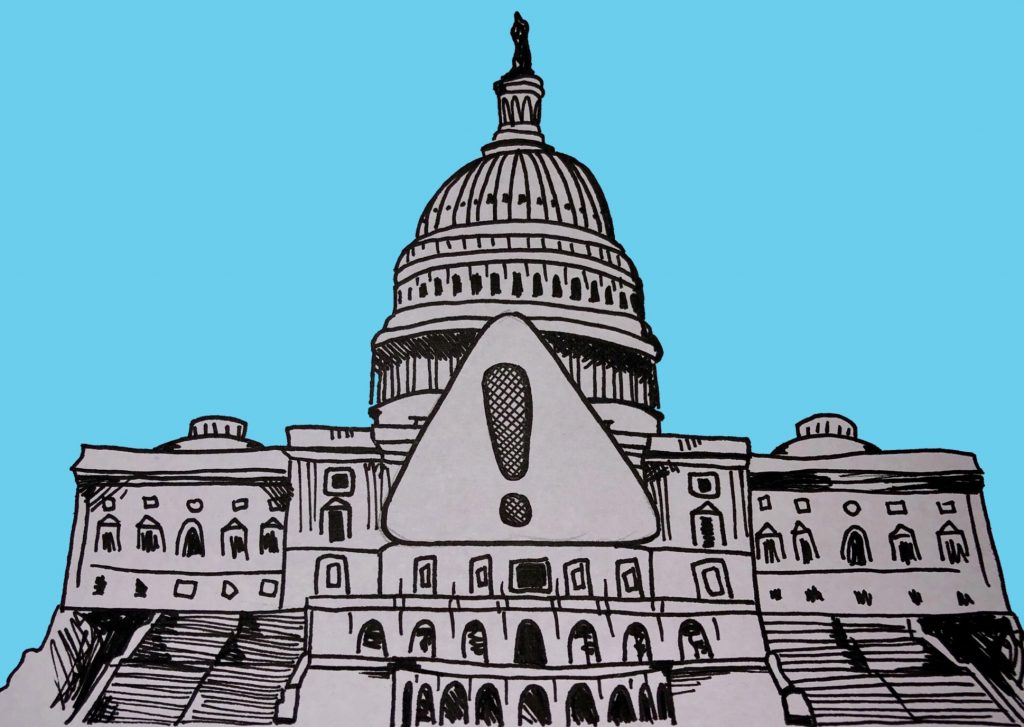By declaring a national emergency, the president gains access to 136 special powers and is able to set aside many of the legal limits on presidential authority. The decision to make the declaration is entirely up to the discretion of the president and there is no requirement that Congress ratify the decision. All the president has to do is sign an executive order and it unlocks powers such as the ability to freeze American bank accounts and shut down all electronic communications within the U.S. The list is extensive, and equally powerful– such as President Trump’s declaration of a national emergency to obtain money to build a wall on the border with Mexico.
In 1976, the National Emergencies Act was passed, formalizing the authority given to the president during a National Emergency and established limits on the duration. It also required that the president specify the powers to be invoked and to issue updates. The state of emergency expires after a year unless renewed, and Congress must meet every six months to discuss emergency-related expenditures.If Congress wants to terminate the emergency, they have to pass a joint resolution that the president has to sign. If the president vetoes the resolution, then Congress has to have veto-proof majority in order to terminate the emergency. However, due to its difficulty, Congress has not vetoed a state of emergency in more than 30 years.
The purpose of a national emergency was to create a way to resolve an economic, military, or labor crisis more efficiently, doing away with the slow and cumbersome wait for a law to be passed or amended. However, a designation of a national emergency can be extended for years. Exactly 58 emergencies have been declared since the National Emergency Act of 1976 was signed into law, 31 of which are still in effect today.
Congress has passed more than 100 different laws over the decades that outline powers given to a president during a national emergency. Congress assumed instances in which emergencies would be declared and wrote laws that would be necessary in such situations. These include control over domestic internet traffic, which could mean that the President can shut down websites, block emails and alter search results. The president can also deploy military troops domestically in order to “suppress any unlawful combinations or conspiracies that are obstructing the execution of the law.” With an emergency declaration, the president can actually freeze American bank accounts a power that is most frightening.
Trump’s recent national emergency declaration came after being denied sufficient funds for his US–Mexico Border Wall. In a speech declaring the emergency, Trump repeatedly used the word “invasion,” as he described immigrants crossing the border into the U.S. The issue in question is whether or not this is an “emergency” and if Trump should be given such powers. The National Emergency Act does not define what an emergency is and on what circumstances a president has authority to declare it. Congress’ hope was that they would not need to add a definition because they assumed the president would only use it in the interest of his country. However, Trump found what some are calling a loophole in the law, finding a way to declare a national emergency even though the there is no imminent danger in America.
It’s clear the National Emergencies Act is flawed because of its loopholes. In theory, a President could consolidate power by declaring a national emergency. If so, the country could turn its back on its democratic ideals and leave itself in the hands of a power-hungry ruler. It’s time for Congress and the American people to attempt to resolve the flaws that persist within the law, before the power lies in the wrong hands.
Julia Zambito
staff writer
Graphic: Evie Cullen

